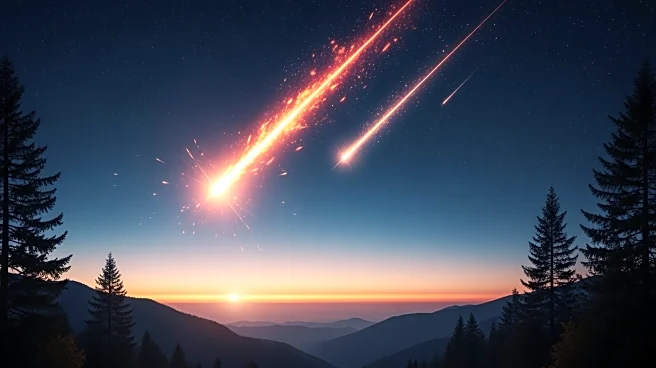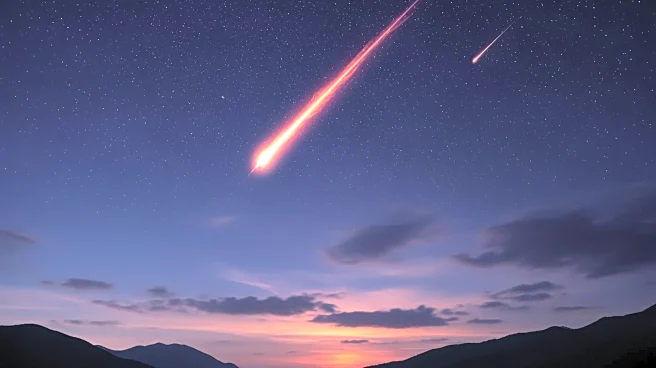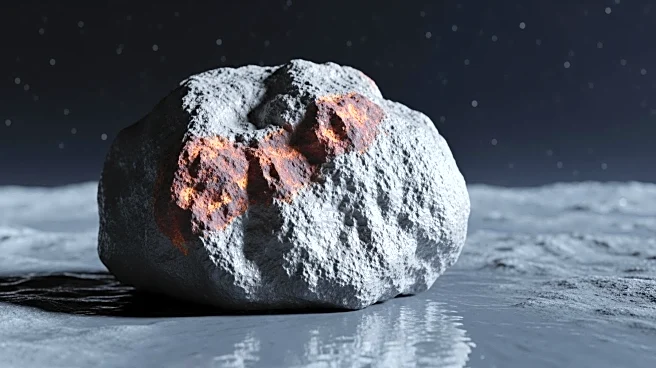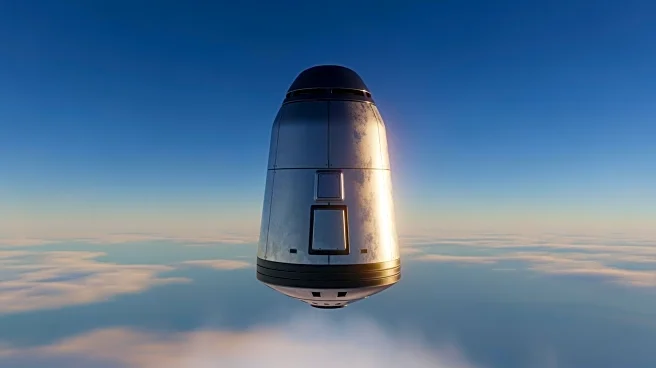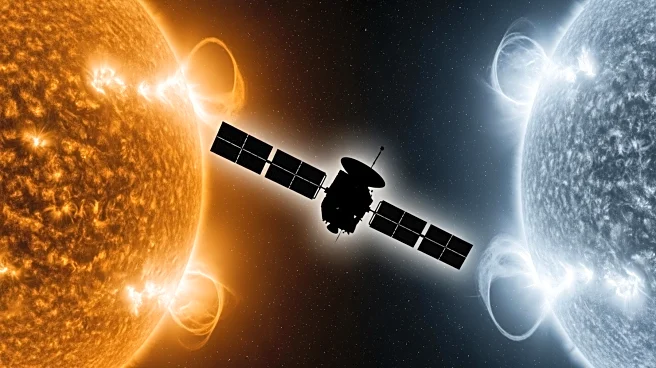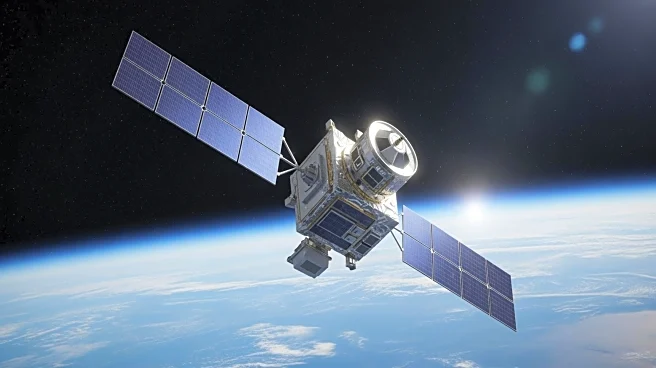What's Happening?
A Chinese satellite, identified as XYJ-7, disintegrated at supersonic speed above the Canary Islands on October 16, 2025. The event was detected by the Canary Islands' seismic network, which recorded the vibrations
at 2:58 a.m. local time. Initially, there was uncertainty about whether the object was a natural meteor or space debris. However, subsequent analysis confirmed it was the reentry of the Chinese satellite. The disintegration produced a bright fireball and a strong shockwave that was detected across the archipelago. The Instituto Volcanológico de Canarias, which monitors seismic and acoustic events, reported that the shockwave was consistent with the reentry of space hardware. The event was characterized by intense light and pressure waves, typical of a bolide, a term used for bright meteors that explode in the atmosphere.
Why It's Important?
The disintegration of the XYJ-7 satellite highlights the potential risks associated with space debris reentry. Such events can produce strong shockwaves capable of causing damage if they occur over populated areas. The incident underscores the importance of monitoring space debris and improving detection systems to mitigate risks. The ability to quickly identify and analyze such events is crucial for public safety, as demonstrated by the rapid response of the Canary Islands' seismic network. This event also illustrates the collaboration between seismology and astronomy in understanding atmospheric phenomena, which can enhance public guidance on safety measures during similar occurrences.
What's Next?
Future steps may involve enhancing international cooperation in tracking space debris and improving predictive models for reentry events. This could lead to better public safety protocols and more accurate hazard assessments. Additionally, the integration of citizen-captured videos with professional data could become a standard practice in analyzing such events, providing more comprehensive reconstructions and improving response strategies.
Beyond the Headlines
The incident raises questions about the increasing amount of space debris and its management. As more satellites are launched, the risk of uncontrolled reentries may grow, necessitating stricter regulations and innovative solutions for debris mitigation. The event also highlights the role of public awareness and education in preparing for rare but potentially hazardous atmospheric events.





